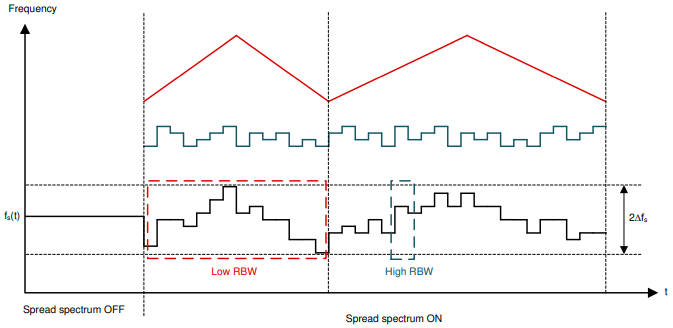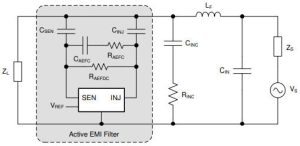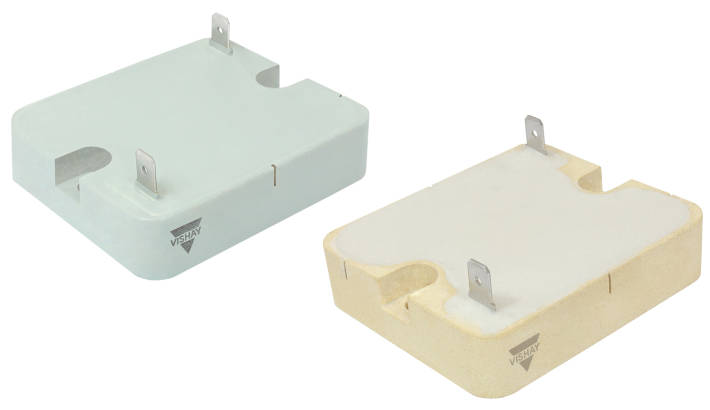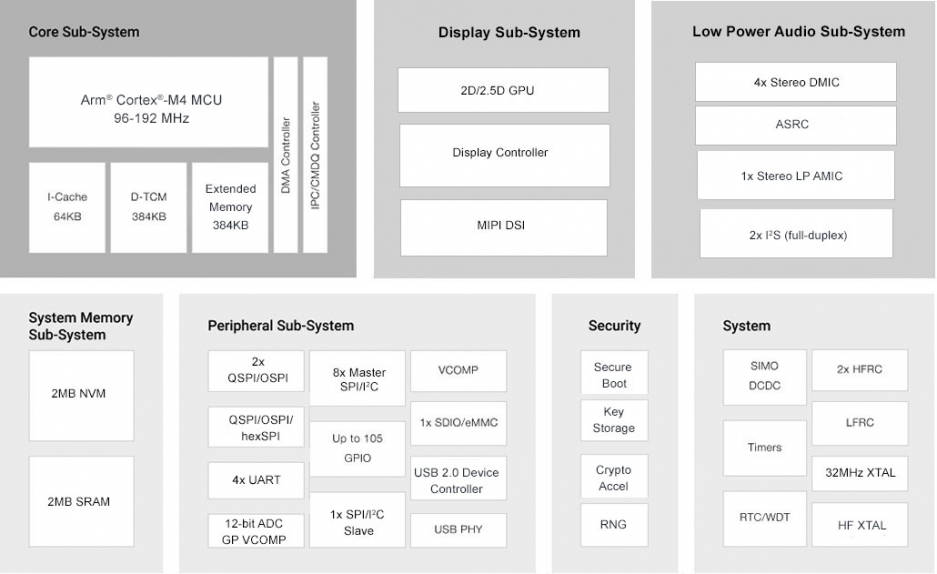
TI’s LM25149 has the option to engage a novel spectrum-spreading signal that is intended to supress generated EMI below 30MHz (so ~conducted) and above 30MHz (so ~radiated).
Called dual random spread spectrum (DRSS), the ‘dual’ part comes from modulating the switching frequency with the combination of a low-frequency triangular wave and high-frequency (cycle-by-cycle) random step (diagram above).
Together, they spread spectral peaks over a widewider band than either would individually, helping measured EMI levels over different resolution bandwidths set-up on the test house EMI receiver.
According to TI, DRSS can reduce conducted emissions by 15 dBμV in the CISPR 25 low-frequency band (150kHz – 30MHz) and 5dBμV in the high-frequency band (30 to 108MHz).
 That chip also has a second trick up its sleeve – an active front-end EMI filter (left) built around a high gain wide bandwidth amplifier with an output (INJ) that can source and sink current.
That chip also has a second trick up its sleeve – an active front-end EMI filter (left) built around a high gain wide bandwidth amplifier with an output (INJ) that can source and sink current.
Intended to augment the traditional front-end CLC π-filter (also left), it implements a capacitive multiplier based pre-filter to reduce the values (and therefore the sizes) of the components needed in the π network.
TI argues reduction in C-L-C passive filter size more than outweighs the need for an extra five passives.
To reduce quiescent current at light loads, the active filter in LM25149 is automatically disabled with loads <30% of the set current limit (and enabled at >40%).
Overall, the LM25149 is a dc-dc controller, requiring a pair of external mosfets for operation.
It is designed to generate multi-amp regulated outputs between 0.8 and 36V from 3.5 to 42V.
As well as an adjustable setting, pins allow fixed outputs of 3.3, 5 or 12V to be selected.







